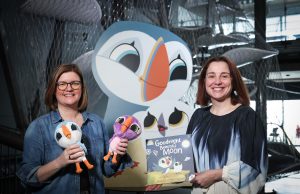Allergy Awareness Week runs from 20th – 25th April and this year’s topic is childhood food allergy and focuses on the weaning journey for parents of babies with food allergies.
Weaning your baby is such an exciting and much-anticipated milestone in your little one’s early life and yet at the same time it can be fraught with worry and concern, particularly where allergies and intolerances are concerned.
With so much information readily available, it can also be confusing. This Allergy Awareness Week, feeding consultant and mum of two girls with food intolerances, Lucy Thomas has prepared some tips to support parents with babies going through the weaning process, to help you feel confident about your weaning journey and the foods you offer to your fledgling weaner.
“As a Feeding Consultant and mum to two girls, I have experienced first-hand the challenges of allergies and intolerances, not to mention second helpings of fussy eating along the way!” says Lucy.
First off, it’s important we understand the difference between an allergy and an intolerance.
A food allergy:
· is a reaction by your immune system (your body’s defence against infection). Your immune system mistakenly treats proteins found in food as a threat
· symptoms usually happen quickly after eating a small amount of the food, such as a rash, wheezing and itching
· common food allergies in babies and children include milk, eggs, fish, peanuts and other nuts
A food intolerance:
· does not involve your immune system – there is no allergic reaction
· causes symptoms that happen gradually, often a few hours after eating the food
· only results in symptoms if you eat a substantial amount of the food (unlike an allergy, where just traces can trigger a reaction)
Lucy has worked with many families over the years whose children have become anxious eaters or incredibly selective about the food they will or won’t eat due to pre-existing health conditions including severe reflux, allergies, intolerances and coeliac disease.
Whether you’re just starting out or in the middle of your weaning journey, she always advocates a relaxed, fun approach to weaning to help the experience become enjoyable and a positive one for everyone involved.
Making weaning fun and interactive can enable you to feel excited and in control rather than apprehensive when trying things for the first time.
Some simple fun tips to try out when sampling a new food:
MIRROR TIME
Babies love looking at their reflection! Place a small amount of puree at the sides of your little one’s mouth and encourage them to stretch their tongue to reach it. This only uses a small amount of new food on your baby’s skin but also encourages tongue dexterity, which supports the muscles required for speech and later controlling more challenging textures in their mouth as they progress through the weaning stage.
Join in with your baby and model for them. Have fun watching each other in the mirror as you stretch your tongues out to reach the puree! Older babies and children might like to paint a spot of puree on the tip of their tongue and watch the magic as it disappears when they close and then open their mouth again.
FINGER FOOD FUN
Sticks of soft fruit or soft-cooked vegetables are great for encouraging independent feeding. Lead by example and demonstrate how your little one can brush their gums or teeth with a baton of soft-cooked carrot or other roots vegetable. Join in with lots of enthusiastic “ahhhhh” and “Cheeeese” as you brush your own teeth to encourage them to do the same.
TEXTURES
It’s really important that we introduce food textures to our babies early on in weaning as they can sometimes be met with a little resistance. A really simple and effective approach of early desensitisation to textures is to use food combining to bridge the gap between two food textures whilst offering an independent feeding experience.
Pairing something like a melty puff with a carrot puree provides your baby with the opportunity to dip and self feed. Your baby will experience a small textural addition to the puree when dipped and enjoyed together.
For slightly older babies from 7 months who are moving onto more challenging textures, food combining is still a brilliant tool to offer an independent feeding experience and some added texture.
GET MESSY!
Finger popping is a brilliant way to have fun, encourage independent feeding and introduces only a small amount of food to begin with. Demonstrate how you can dip your own finger into a new food – this could be a puree, porridge or mashed food, then suck your finger to make a loud popping sound! Encourage your baby to do the same and give lots of encouraging praise for their efforts!
BABY STEPS
If you are particularly concerned about how your little one may react to a certain food, use only a small amount in isolation. Encouraging your baby to smell, kiss or simply lick a new food is a great way to build their confidence with an unfamiliar food, but also will allow you the opportunity to watch out for any reactions that may occur on their hands or face.
For a variety of Allergen Free Recipes and great ways to make your weaning journey varied and fun visit www.organix.com/recipes where you can also filter recipes based on allergens and age range!








